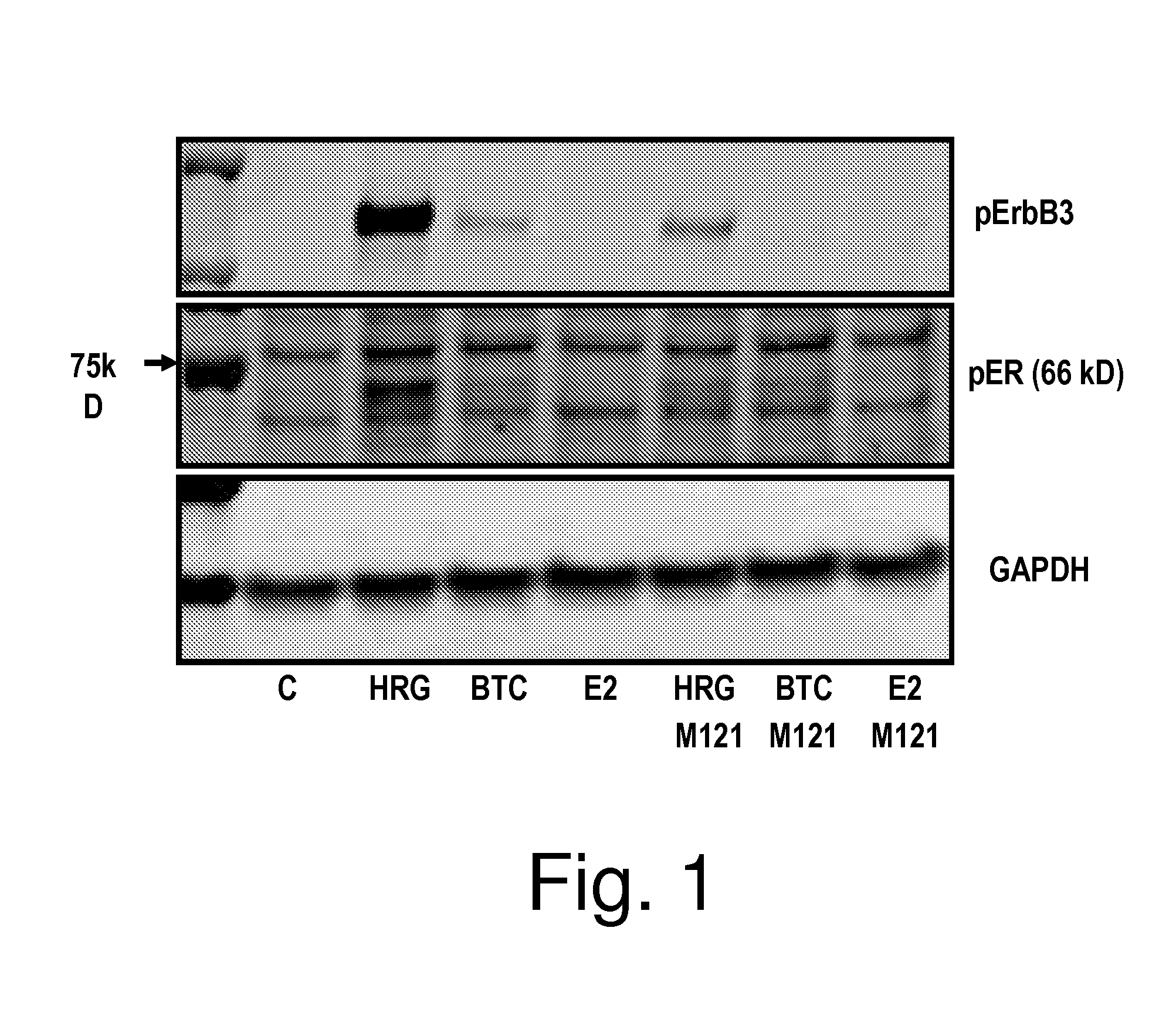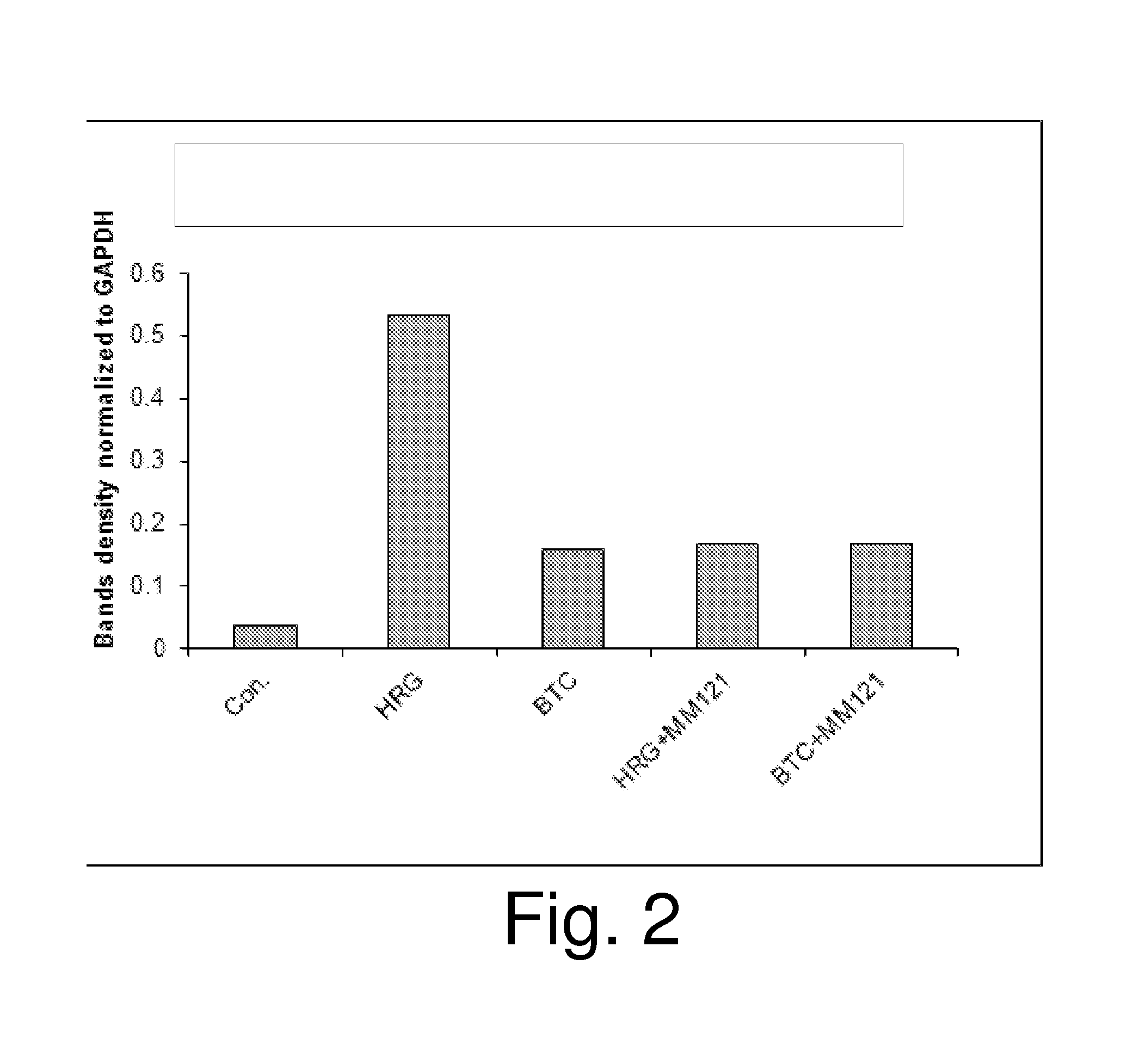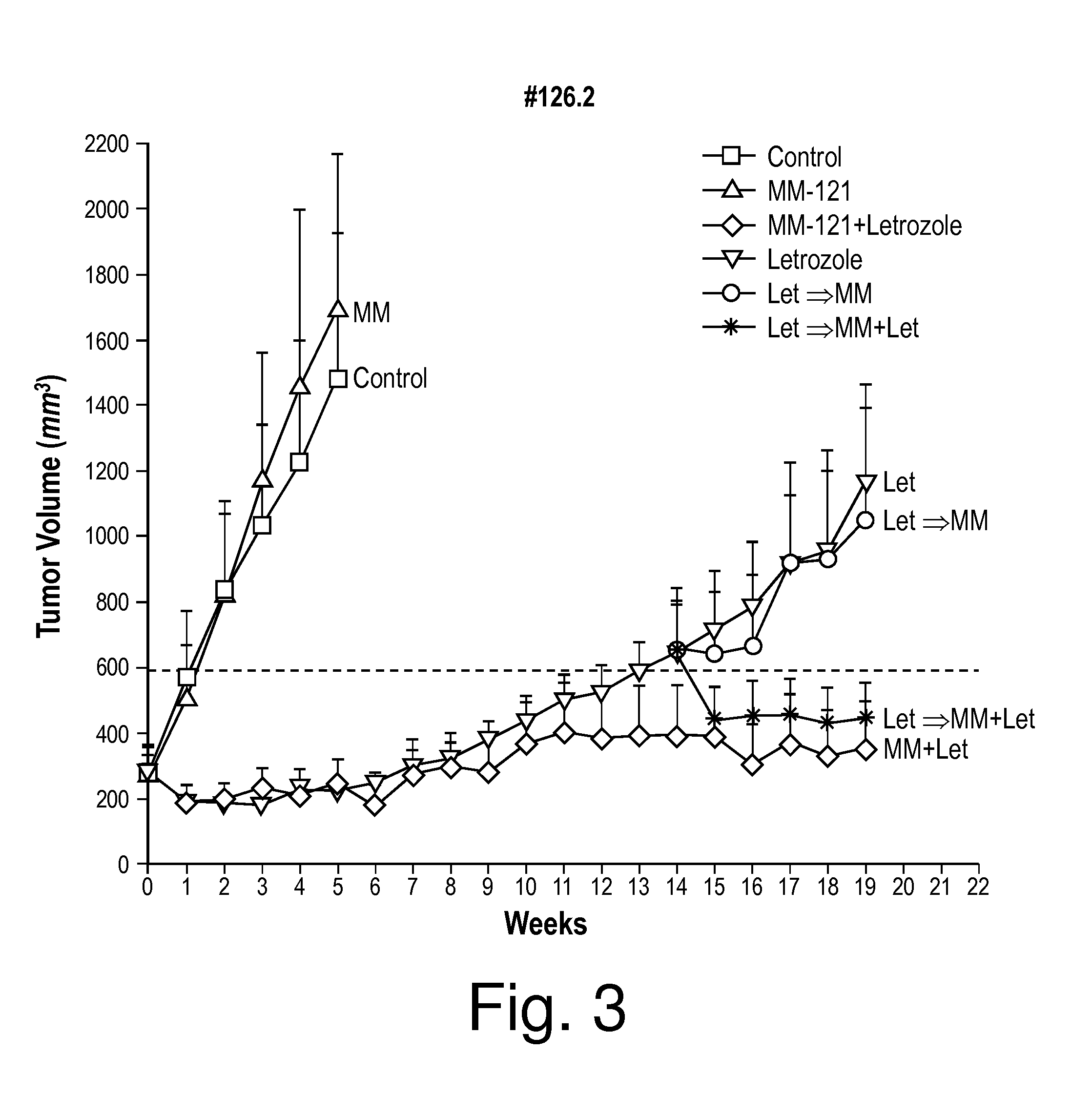Use of inhibitors of egfr-family receptors in the treatment of hormone refractory breast cancers
- Summary
- Abstract
- Description
- Claims
- Application Information
AI Technical Summary
Benefits of technology
Problems solved by technology
Method used
Image
Examples
example 1
MM-121 Treatment of ER+, Hormone Refractory Mammary Tumors
[0097]Analyses of the anti-tumor efficacy and tolerability of MM-121 treatment of ER+ hormone refractory mammary tumor-bearing mice are carried out using xenografts of tamoxifen-resistant variants of MCF7 human mammary carcinoma cells. Tamoxifen-resistant human mammary carcinoma cell lines TAMR-1, TAMR-7, and TAMR-8 cells are obtained from the laboratory of A. E. Lykkesfeldt (Department of Tumor Endocrinology, Division for Cancer Biology, Danish Cancer Society. Strandboulevarden 49, DK-2100 Copenhagen 0, Denmark). These are grown as xenografts in female athymic nu+ / nu+ nude mice obtained from Charles River Laboratories International. SCID mice (C.B.-17 / IcrACCscid) obtained from the Arizona Cancer Center breeding colony, Tucson, Ariz., are also suitable. The mice are housed in Tecniplast® Individually Ventilated polycarbonate (Makrolon®) Cages (IVC) set in climate-controlled rooms and have free access to food and acidified wat...
example 2
MM-121 Inhibition of HRG-Induced ER Phosphorylation In Vitro
[0106]MCF7 cells are either untreated or pretreated with MM-121 (250 nM) for 1 hour. Cells are then stimulated with heregulin betal (EGF domain, 10 nM R&D systems), betacellulin (20 nM, R&D systems) or estrogen (beta estradiol—100 nM, Sigma) for 30 minutes, or left unstimulated. Lysates of the cells are analyzed by western blot probed for pER and for pErbB3.
[0107]To demonstrate the ability of MM-121 to reduce heregulin-induced activation of the estrogen receptor, treatments were tested in the ER+, PR+, ErbB2+ cancer cell line MCF7 using the methods described above or trivial variations thereof. Cells were either untreated or pretreated with MM-121. Untreated and pretreated cells were stimulated with heregulin, betacellulin, or estrogen. Cell lysates were analyzed by western blot for phosphorylated forms of ErbB3 and estrogen receptor.
[0108]As shown in FIG. 1 (western blot) and FIG. 2 (densitometry of the data in FIG. 1), un...
example 3
Restoring Sensitivity and / or Preventing Resistance to Aromatase Inhibitors by Co-Administration with MM-121
[0109]Aromatase inhibitor (AI) treatment is well tolerated by patients, and the therapy is effective for a relatively long period. However, patients who are initially responsive to AI treatment can become resistant to the drug. To investigate the mechanism of AI resistance, a xenograft model was developed that corresponds to ER+ postmenopausal breast cancer. Tumors for this intratumoral aromatase xenograft model are grown from MCF7 human breast adenocarcinoma cells that have been stably transfected with a human placental aromatase gene to provide a non-ovarian source of estrogen production in ovariectomized athymic mice (MCF-7CA, see e.g. Brodie et al., Clinical Cancer Research 884s Vol. 11, 884s-888s, Jan. 15, 2005 (Suppl.)). Sufficient estrogen is produced (from aromatization of injected androstenedione) by the MCF7-CA cells to stimulate their proliferation and tumor formatio...
PUM
| Property | Measurement | Unit |
|---|---|---|
| Fraction | aaaaa | aaaaa |
| Fraction | aaaaa | aaaaa |
| Fraction | aaaaa | aaaaa |
Abstract
Description
Claims
Application Information
 Login to View More
Login to View More - R&D
- Intellectual Property
- Life Sciences
- Materials
- Tech Scout
- Unparalleled Data Quality
- Higher Quality Content
- 60% Fewer Hallucinations
Browse by: Latest US Patents, China's latest patents, Technical Efficacy Thesaurus, Application Domain, Technology Topic, Popular Technical Reports.
© 2025 PatSnap. All rights reserved.Legal|Privacy policy|Modern Slavery Act Transparency Statement|Sitemap|About US| Contact US: help@patsnap.com



